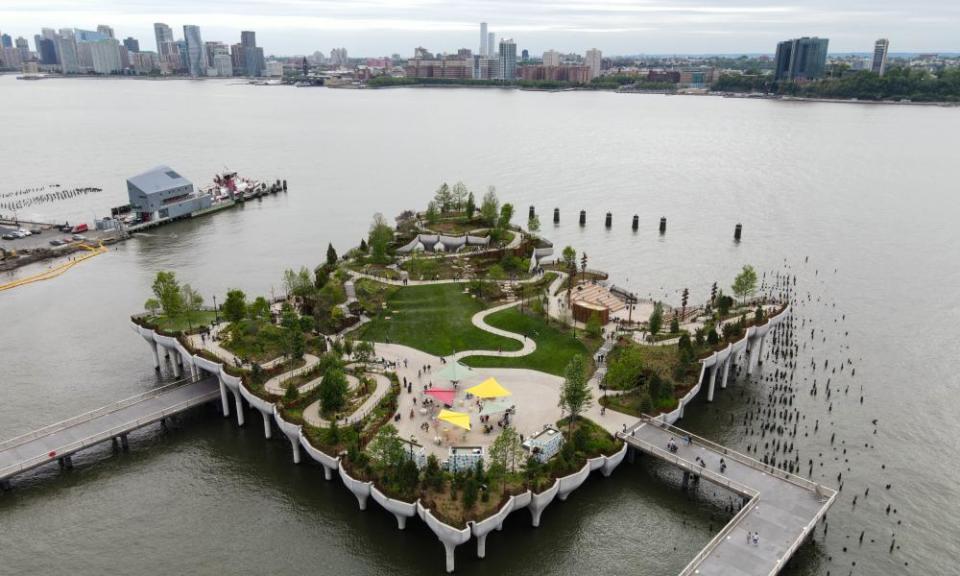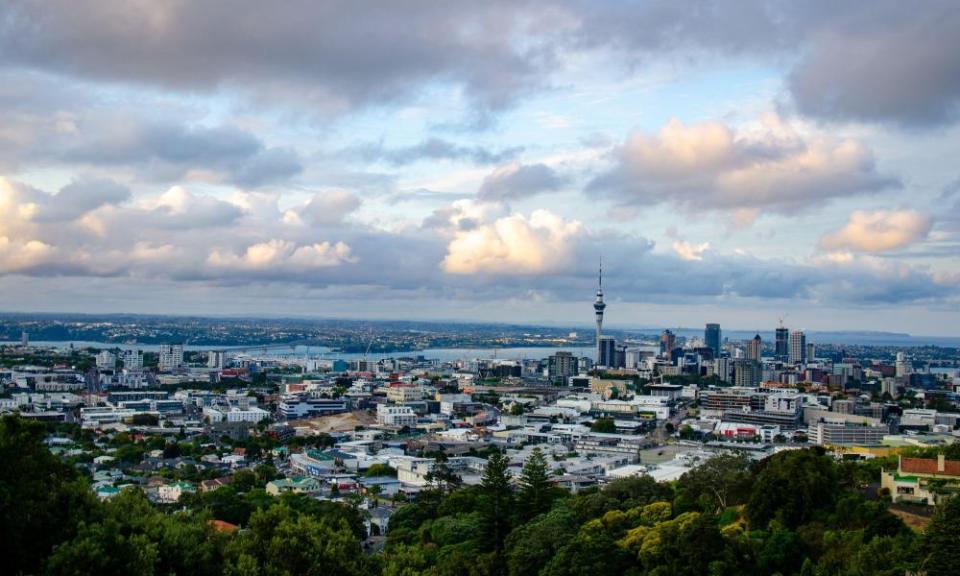New York’s Little Island includes a message about the Thames garden bridge

Little Island, a garden built over the Hudson River, designed by the British designer Thomas Heatherwick and the landscape architect Signe Nielsen, has opened to some good reviews. “It’s a bewitching, and utterly New York-y, place,” says the design website Curbed, with “wraparound views… even the bathrooms are a surprise, tucked beneath a hillock and gleaming like buried treasure in their own cave”. Given that London passed on the opportunity to have its own Heatherwickian plants-over-water project, the never-built garden bridge, Little Island poses a question: did the Thames miss a trick or dodge a bullet?
There is a dissident note, voiced by Henry Grabar on Slate. He points out that Little Island is very small and incredibly expensive: 2.4 acres and $250m, plus many millions more in running costs, or more than $100m per acre, if you like. There are less glamorous parks all over New York dying, literally, for the lack of a fraction of such funding. Pressure of numbers means that, for now at least, you have to book timed entry tickets for visits to Little Island after midday, which seems at odds with the casual, happy-go-lucky spirit you want from a park. The tab is being wholly picked up by the media mogul Barry Diller, so the island is defended by some on the basis that it’s a free gift, so everyone should be grateful. At the Garden Bridge, no Diller-like donor ever came forward and it was the project’s escalating expense that did for it in the end. It would also have experienced the same crowds v Eden conflict that is likely to persist at Little Island.
The art of giving

In other plutocratic baubles news, the historic Paris Bourse has been converted to house the art collection of the luxury goods magnate François Pinault, its elliptical centre now dominated by a grandiose concrete wall by the Japanese architect Tadao Ando. You could say that these trophies are part of the rich tapestry of life, but you do wish for an old-fashioned billionaire philanthropist, such as the Scottish-American steel tycoon Andrew Carnegie, who managed to fund thousands of libraries and university buildings as well as prestige projects such as his concert hall.
Life in the city

Auckland in New Zealand has been named the world’s most “liveable” city, boosted by the nation’s outstanding Covid record, alongside five other Australasian metropolises in the top 10. Not killing people through virus mismanagement is certainly a good definition of “liveable”, but as always with such surveys their criteria don’t seem to include the things that really make a city great – energy, excitement, a certain unique spirit. They prefer calm, orderly places such as Auckland.
The New Yorks of Andy Warhol, the Harlem Renaissance or the Paris of Toulouse-Lautrec wouldn’t have done well in their rankings.
Instant beauty

In one of several half-baked planning policy wheezes, the government wants to introduce a “fast track to beauty” whereby developers would get planning permission more quickly if their proposals conform to pre-agreed principles of aesthetic desirability. In practice, this is likely to mean some kind of neo-Georgian style. Now, a committee of MPs has decided that, “given the problems with defining beauty”, the idea is unworkable.
There’s the germ of a good idea in the notion of simplifying arcane planning procedures, but the problem is surely evident in the name – how often, in art, nature or life, does the beautiful come about as a result of being “fast-tracked”? Not very often.
• Rowan Moore is the Observer’s architecture critic

 Yahoo Movies
Yahoo Movies 